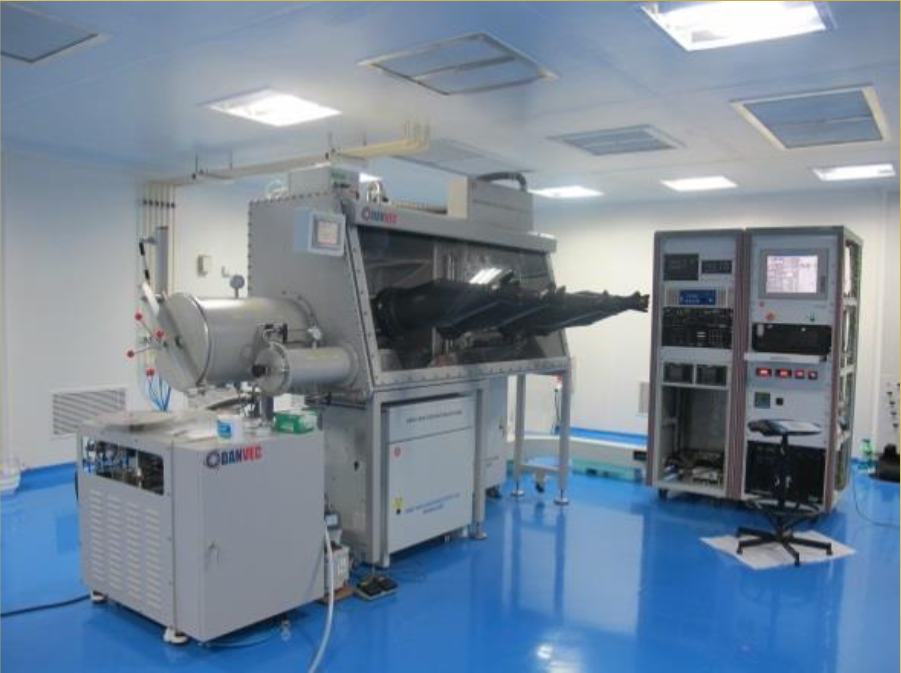
PVD/CVD
Multi-source PVD system with parylene coater, Silane based CVD, spin coater, screen printer, Maskless lithography, and rapid annealing are the fabrication facilities for the development of flexible devices on polymer substrates. The lab has CV-IV analyzer to perform the complete characterization of devices.
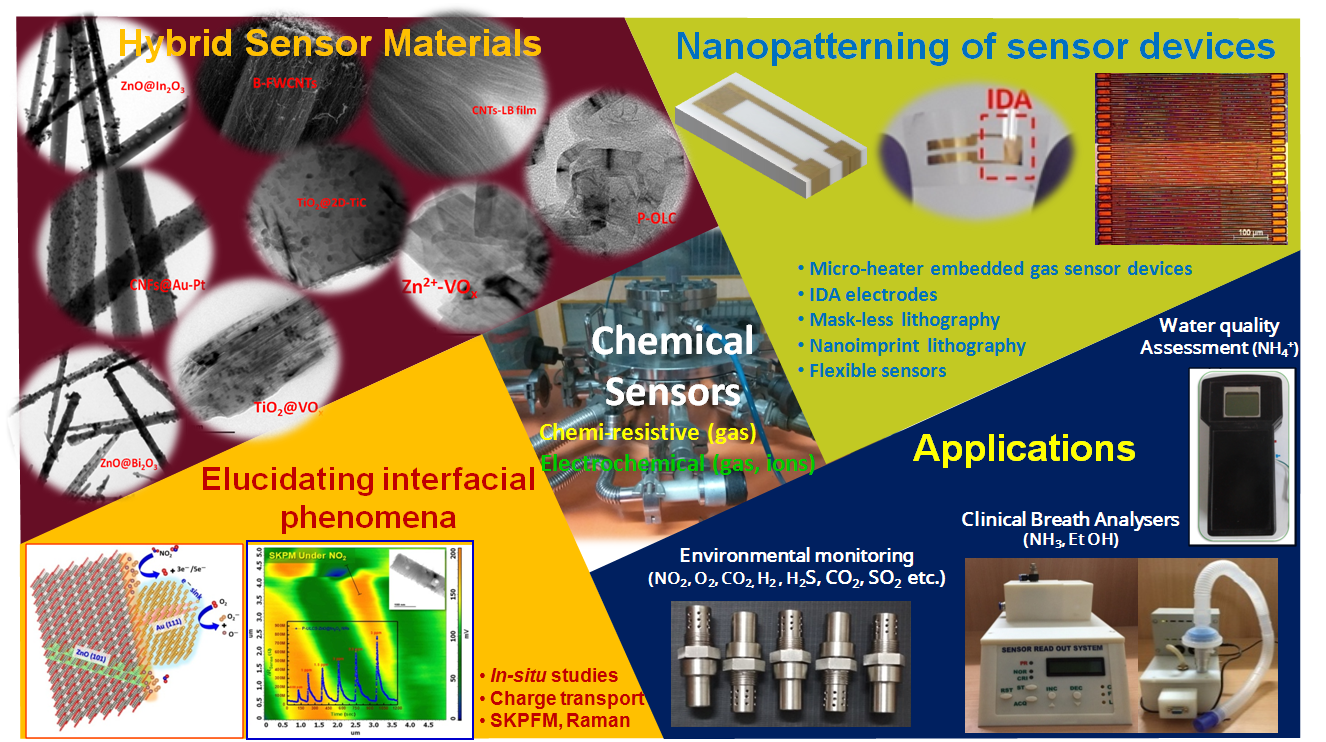
Sensors
The sensor group at PSGIAS focus on implementing innovative ideas based on Nanotechnology to realize sensor devices for real time applications having societal impacts. The major aim of this group is to use multidisciplinary approaches to design and develop novel sensor materials and fabrication of high performance sensors. The key activities of this group are development of nanoscale sensors, integration of sensors with electronic readout systems, implementation of sensors for real time applications and field trials with industrial collaborations. The sensor group mainly focuses on chemiresistive, electrochemical and SERS based sensor platforms for environmental and water quality monitoring, biomedical, automobile and food quality applications. This group is currently involved in development of cost-effective high performance devices: (i) flexible gas sensors for environmental monitoring and clinical breath analyzer applications, (ii) microfluidic lab-on-chip sensor platforms for water quality monitoring and biosensor applications and (iii) SERS based sensor touch-PADs for biomarker detection in body fluids (saliva, blood, sweat etc). Our institute is equipped with the state-of-art facilities for fabrication, testing and calibration of gas sensors and electrochemical/biosensors.

Renewable and Sustainable Energy Materials
In renewable and sustainable energy research, our group focuses mainly on development of durable mesoporous carbon based electrocatalyst support materials for proton exchange membrane fuel cells. We are also developing high quality self-cleaning coatings based on superhydrophobicity for solar panels for sustainable energy production. These superhydrophobic coatings based on nano-formulations are also being extended for large area non-PV applications, such as glass facades, marine applications, smart
textiles etc. adopting simple coating procedures. Our group has also developed an advanced front contact metallization strategy to reduce shadow loss in solar cells based on silver-less approach using nanoimprint lithography.
Tissue Engineering
This group works on development of various scaffolds and biomaterials for use in bone, cartilage, endometrium and nerve tissue engineering applications. The group consists of faculty members having expertise in meniscal tissue engineering, polymeric scaffold development, bioink development for 3D bioprinting of cells and scaffolds and Plant based biomaterial development. The group actively collaborates with various hospitals and industry at national and international level like PSG Institute of Medical Science and Research, Orthone Hospitals, Coimbatore, St. Vincents hospital, Australia, Innov4sight Health and Biomedical Systems Pvt. Ltd, Bangalore etc.
Nanobiotechnology
The Nanobiotechnology group focuses mainly on development of an integrated microbial and nanomaterial based technologies for water purification, effluent treatment, and mitigation of antibiotic resistant microbes in water/effluents. The group is also actively engaged in developing technologies to reduce the environmental impact of materials and processes used in precious metal recovery from mine ores through an interdisciplinary approach involving microbiology, electrochemistry, and nanotechnology. The lab has been successful in developing various adsorbents to remove strontium, fluoride, nitrate and arsenic from ground water. A field level water purification unit is currently under evaluation for removal of strontium from groundwater in Ankupalli Village, Nellore, AndhraPradesh. Similarly, a technology for removal of zinc and chromium from the electroplating industry has been developed and technology has been transferred to an electroplating industry in Coimbatore. Currently the laboratory is working on scale up of processes and the reactors to cater industrial need at field level. The outcomes of the research from this group have been delivered in the form of publications in various national and international journals, as patents and as technology transfers. The research works are mainly funded by ICMR, DRDO, DST, IGCAR, Govt. of IndiaandONGC- Energy Centre.
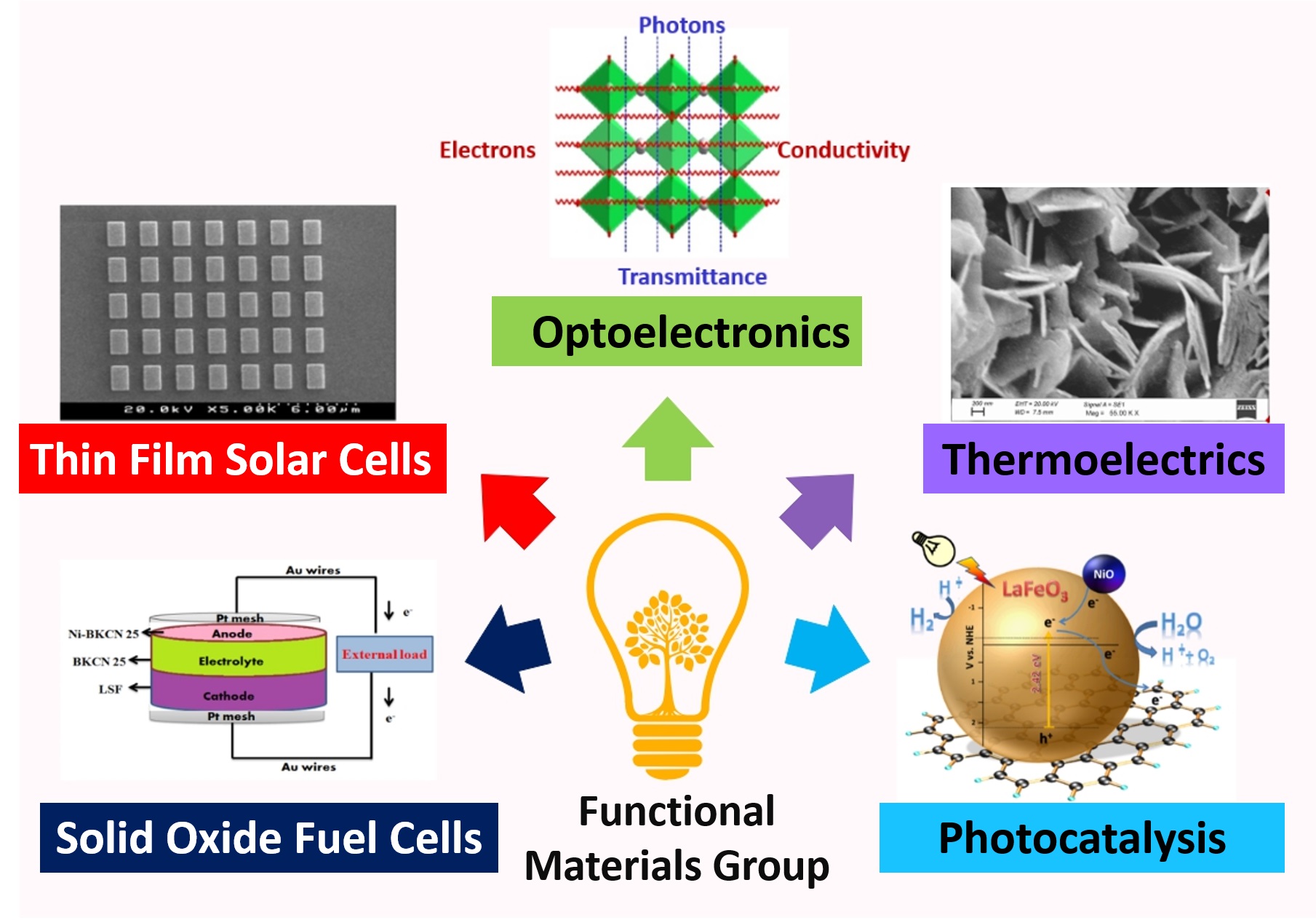
Functional Materials
The research activities in Functional materials group is focused on complex oxides for clean energy applications. Complex oxides such as perovskite, spinel, Brownmillerite or Kesterite based structures and doped primary oxides made up of earth abundant materials are synthesised for Solid oxide Fuel Cell, thermoelectrics, solar photovoltaic, supercapacitor and photocatalytic hydrogen generation applications. These materials are modified to get the highest possible efficiency in the proposed application. Once the materials with optimum characteristics are obtained, a prototype device for the clean energy generation is fabricated and its efficiency is analysed.
Plasmonic Nanomaterials
Our research focuses on exploiting optical properties of nanomaterials to be developed into products that can be deployed in various applications. One part of the research is focused on developing robust nanocomposites for monitoring hazardous gases like CO, NO2 under harsh combustion environments such as gas turbines. Another critical area of research is on investigating the use of plasmonic nanomaterials in augmenting the properties of phase change materials, which find direct applications in the field of energy storage.

Nanostructured Surfaces and Thin Films
The primary focus of the group is to synthesize novel functional nanostructures based on non-equilibrium vacuum deposition processes intended for super-hard surfaces, and high efficiency thermoelectric thin film generators (TFTEG). The research team also focus on the processing of low-cost earth abundant materials using non-vacuum-based techniques like spin-coating, hydrothermal etching, and spray-pyrolysis processes for broad band anti-reflective glass surfaces and large-scale TFTEG devices for energy harvesting applications. As a part of the ongoing research, one of goal is to develop Tin Selenide based planar TFTEG on large area substrates such as glass and stainless-steel substrates using low-cost scalable spray-pyrolysis technique. The team thrives to offer consultancy and provide solutions in the area of nano-composite coating comprised of Chalcogenide (WS 2 , MoS 2 ) and Nitrides (TiN, CrN, ZrN, Si 3 N 4 , TiAlN) in order to improve the tool-life of cutting tools.
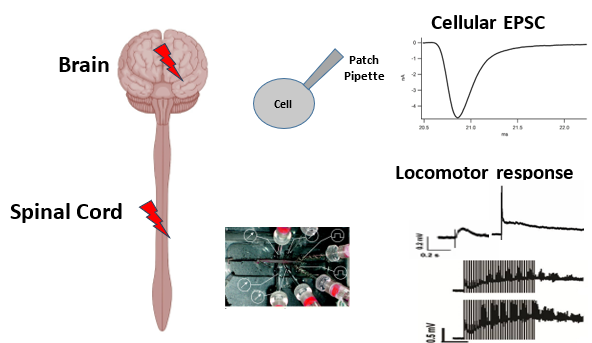
Neurophysiology Lab
Understanding molecular factors behind neurodegeneration and devising treatment strategies – Research Summary: My lab focuses on the molecular factors involved in neurodegeneration and regeneration after neuronal injury. Traumatic brain and spinal cord injury can be detrimental and the functional recovery to normal physiological conditions may take several weeks to years. During a neuronal injury there is a primary/acute impact leading to prolonged secondary injury that further exaggerates the functional loss. The secondary injury involves many cellular events like excitotoxicity, inflammation, oxidative stress, axon degeneration and so on. Hence, our study on the molecular factors associated with secondary injury cellular events would help us developing treatment strategies for the recovery of neuronal function.
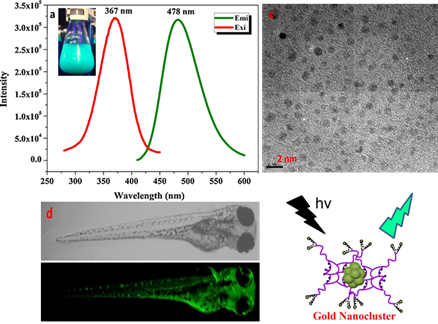
Luminescent Quantum Clusters
Our research group focuses on developing new atomically precise fluorescent noble metal nanoclusters (MNCs) for in vitro and in vivo bioimaging and fluorometric sensing applications. Metal nanoclusterscomposed of tens to hundreds of atomswith a size of less than 2 nm.In this size regime, the collective oscillation of conduction band electrons of their larger nanoparticle breaks into discrete energy levels, which leads to the size-dependent fluorescence properties from UV to near-IR region.Fluorescent NCs generally exhibit excellent photostability, meaning that they can sustain their fluorescence intensity for a prolonged period without significant photobleaching. This property is particularly advantageous for long-term imaging applications.Fluorescent MNCs have small sizes in the range of a few nanometers, which allows for efficient cellular uptake and intracellular distribution. Their small size also contributes to their unique fluorescence properties, such as efficient fluorescence resonance energy transfer (FRET) and minimal scattering.
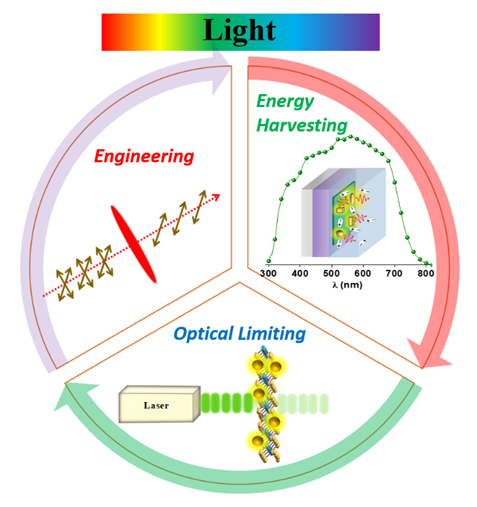
Light-Matter Interactions in Nanoscale Optical Materials
How do we manipulate light interaction with matter at the sub-wavelength scale? This question lies at the core of modern optoelectronics, where controlling light-matter interactions beyond the diffraction limit has the potential to revolutionize optoelectronic devices. Precise control of light at these scales can be attained with the proper utilization of distinct properties of plasmonic and semiconductor nanostructures. My research focuses on the synthesis and fabrication of different sizes and shapes of metal and semiconductor nanostructures by employing techniques like physical vapor deposition and chemical synthesis. These nanostructures are engineered to efficiently control the light-matter interaction for advanced optical and optoelectronic applications, pushing the boundaries of energy harvesting, sensing, and light manipulation.
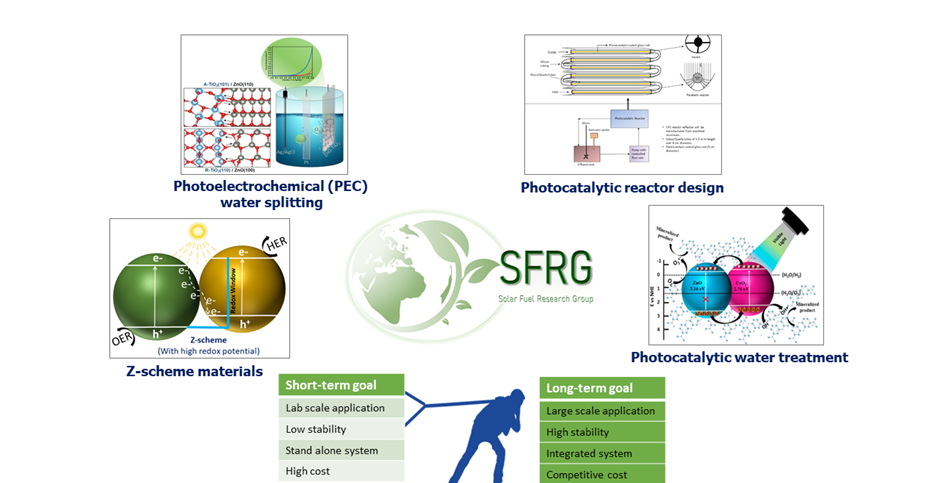
Solar Fuel Research Group
Solar energy can be stored in the form of fuels by splitting water to generate hydrogen and oxygen, and in SFRG, we are working on various photoactive materials (metal oxides, 2D materials, metal NPs etc.) with specific morphologies and optical properties. We are using these materials as catalysts for the development of sustainable processes for various applications like photocatalysis, photovoltaics, photoelectrochemical conversion to useful chemicals, as well as environmental remediation. In addition, to get theoretical insight about the modified materials, we are closely working on DFT calculations through the collaborative efforts of professors working at various premier institutes abroad. For practical applications, we are also working on the development of photocatalytic reactors that can act in various modes.
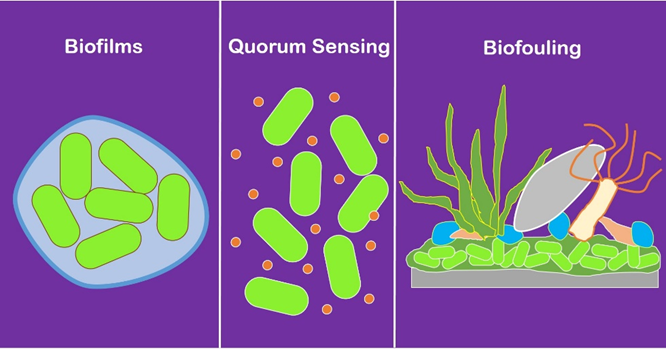
Biofilm Lab
Biofilm Lab focuses on addressing the challenge of biofilm formation, which poses significant problems in both medical and industrial sectors. In healthcare, biofilms commonly develop on medical devices such as orthopedic implants and catheters, leading to serious complications. These microbial communities are highly resistant due to their extracellular matrix shielding them from antibiotics and immune responses. Biofilm bacteria communicate through quorum sensing (QS), a process that involves signaling molecules to regulate group behaviors, including the expression of virulence factors. In the industrial and marine sectors, biofilms are a major contributor to biofouling, where they serve as the initial attachment attracting macroorganisms that lead to fouling layers. Our research focuses on developing strategies to prevent biofilm and biofouling formation and to disrupt QS-mediated virulence.
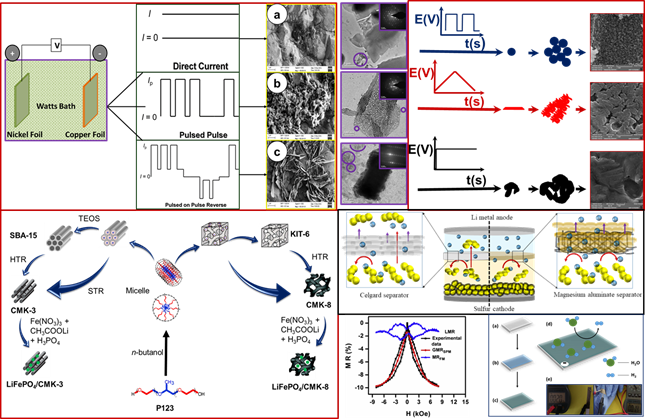
Renewable Clean Energy
The fabrication of high-performance lithium-ion batteries is the main goal of our research without sacrificing high capacity, stability, or high C rate for mobile applications. Our goals include the preparation of high-surface catalytic host materials with tunable pore order, pore shapes, pore volume, surface area, and controllable compositions to hold active materials. Due to their uniqueness, they can continuously interact with large accessible areas in controlled zones and enhance product formation. Based on these above characteristics properties we are also working on material and electrochemistry-based research like batteries, electrocatalysis, pollutant degradation, sensors, and metal recovery from waste to valuable end products.
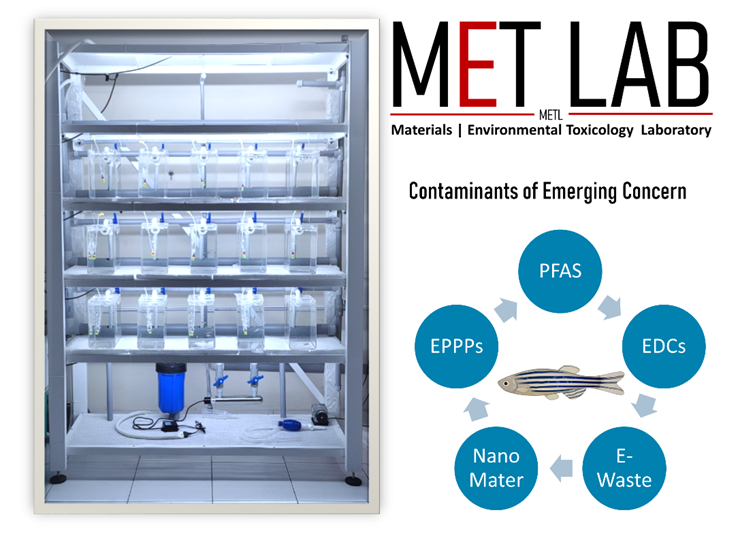
Materials and Environmental Toxicology Laboratory
The expanding field of environmental toxicology is grappling with new challenges as contaminants of emerging concern (CECs)—substances that have not been traditionally monitored or regulated—are increasingly scrutinized for their potentially harmful effects on health and ecosystems. As these CECs increasingly permeate natural systems, research is focusing on their interactions with living organisms using various in vitro and in vivo models to understand toxicological endpoints, mechanisms of toxicity, and potential adverse effects. Our research team is engaged in assessing the environmental risks associated with CECs by employing innovative models to evaluate their impact. Although the list of CECs continues to grow, our current research emphasizes the toxicity effects of pharmaceutical pollutants and microplastics using the zebrafish (Danio rerio) model. The use of zebrafish in toxicity testing, combined with these approaches, will enhance the effectiveness of strategies aimed at protecting environmental and public health.
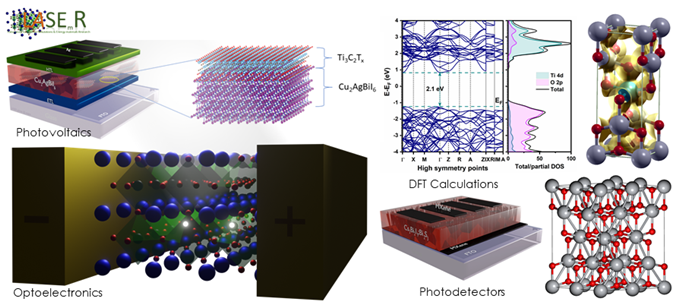
Atomistic Simulations for Energy Materials Research
We are interested in the fundamental structure-property relationships, light-matter interactions, and charge transfer phenomena in semiconducting materials and interfaces to evaluate their suitability for use in optoelectronic devices, specifically photodetectors and photovoltaic devices. It is crucial to understand the underlying mechanisms involved in the material properties to develop novel engineering strategies and optimize the device performance. Alongside experimental methods, we utilize ab initio atomistic simulations to provide a theoretical framework for investigating nanoscale interactions and predicting material responses under various conditions. This approach not only helps in understanding fundamental mechanisms but also guides the design and optimization of advanced materials for applications like batteries, fuel cells, and solar energy harvesting devices, ultimately accelerating the development of high-efficiency energy technologies.

Functional Organic Materials lab
Our research group focuses on the rational design and synthesis of organic small molecules and polymeric materials, applying them to solar cell devices and chemosensing applications. Our main goal is to create special organic functional materials at the molecular level, imparting various capabilities by strategic molecular design and engineering. Key areas of our research include the synthesis of conjugated donor-acceptor materials for organic solar cells, where we improve photophysical and charge transport for effective exciton dissociation and charge collection. We also create novel hole-transporting materials (HTMs) and interlayers for perovskite solar cells, which improve charge extraction and reduce recombination via interfacial engineering. In addition, we develop NIR active fluorescent polymeric materials for theranostics and chemosensing applications. Beyond material synthesis, we fabricate solar cell devices to evaluate their photovoltaic properties and device stability.
Sustainable Environment and Bioresource Technology Laboratory
Our major research direction is to utilize bioresources from organic waste, encompassing anaerobic and aerobic fermentation processes, anaerobic digestion mechanisms, and bioenergy production (hydrogen/ methane). We also focus on biochar production from organic waste, and soil remediation. Our research team focuses on the development and evaluation of value-added bioproducts (biosurfactant, biolipids, and PHA) and biofuel production technologies, with a strong emphasis on techno-economic feasibility and environmental sustainability. To achieve a sustainable biobased economy, it is crucial to study different technologies at multiple scales. Therefore, we employ a combination of experimental and theoretical approaches, utilizing systems analysis, techno-economic analysis, and life cycle analysis techniques to conduct studies at the molecular, bench, and industrial scales.
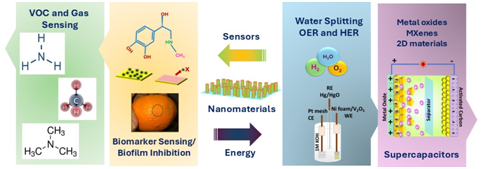
Functional Nanomaterials for Energy & Sensors (FuNES Lab)
Functional Nanomaterials for Energy & Sensors (FuNES Lab) is dedicated to advancing materials science research, focusing on metal oxides, MOFs, MXenes, and 2D materials to develop innovative solutions for energy and sensor applications. The lab explores chemiresistive sensors for environmental monitoring and electrochemical sensors for biomarker detection. The group is also researching efficient materials for water electrolyzers, CO₂ reduction, and energy storage, with a particular focus on water splitting reactions (OER and HER) and the pseudocapacitive behavior of metal oxides. Additionally, FuNES Lab investigates single-atom catalysts and high-entropy materials to enhance material performance in next-generation technologies. Expanding its scope, the lab is also engaged in designing nanostructured materials for biofilm inhibition, addressing biofouling challenges relevant to healthcare, marine, and water treatment applications. By integrating fundamental material insights with real-world applications, FuNES Lab aims to tackle current scientific challenges and drive sustainable advancements in energy, sensing, and environmental technologies.
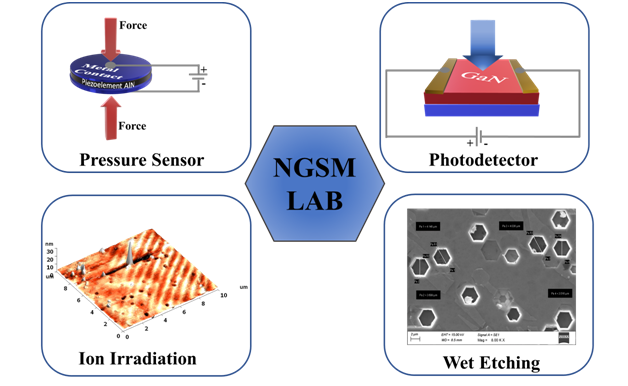
Next-Gen Space Materials Lab (NGSM Lab)
Our research group focuses on group III-V materials for space applications due to their excellent thermal and radiation stability. We develop GaN and AlN using CVD and PVD techniques for photo-detectors and pressure sensor applications. We are also collaborating on developing nanomaterials for energy harvesting and storage devices to broaden our research scope. We are focused on non-destructive techniques for thin film characterization and button-type battery residual capacitance measurement. Also, our research group is involved in consultancy projects and provides solutions for thin film development and characterizations for various applications.

